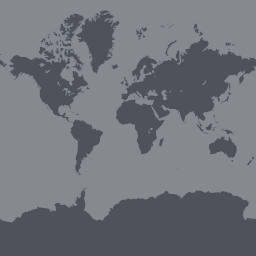Grasses are everywhere. More than half of Madagascar is grassland with more than 500 endemic, native, or alien species of Poaceae, the family of grasses. Unfortunately, most specimens are kept in France in the vascular plant collections of the Muséum National d'Histoire Naturelle (MNHN), not practically available to Madagascan researchers and other stakeholders as internet connections are generally too slow to download the specimen records with images.
In the first step of this project, the MNHN herbarium will deliver the relevant specimen images on hard drives to staff at the Kew Madagascar Conservation Centre (KMCC) who in turn will train project officers and colleagues from Parc Botanique et Zoologique de Tsimbazaza (TAN) and MadBIF in the use of the BRAHMS management system, as well as georeferencing, and data quality control.
The project officers will create a BRAHMS database of every collection with maximally accurate location data. Working with project partners at the University of Oxford, the team will develop a protocol to transfer data between the RECOLNAT system at MNHN and the local BRAHMS database to return data to the specimen holding institution. The team will also publish updated records to GBIF.org using a process already developed for RECOLNAT, with additional uploads carried out by MadBIF and RBG Kew for their specimens.
Using the published data on native species, the project will compile the Grass Atlas of Madagascar. This Atlas will enable KMCC to develop a conservation strategy for valuable endemic grasses, and protected areas with grasslands. The University of Antananarivo will facilitate two Alien Grass National Strategy Workshops. The formulation of the Alien Grass National Strategy will enable identification of invasive species and future management of invasion risks.
Project Progress
The project recruited two database officers to transcript data from herbarium sheet images and to compile data in BRAHMS (Botanical Records and Herbarium Management System). The KMCC database manager, Ms. Linah Rabarivola, trained two project members, who then started working on 2918 speciemen photos. All (21,664) Madagascar Poaceae specimen images from the Museum National d'Historie Naturelle Herbarium were extracted and copied to external discs and brought to Madagascar. This data and data from Parc Botanique et Zoologique de Tsimbazaza (PBZT-TAN) have been cleaned and combined in the main BRAHMS project database. Verification of data quality in the databse were carried out every two weeks by the KMCC database manager. A RDE file (Rapid Data Entry) was created to store top quality compiled data. 5910 collection instances were recorded in the cleaned, top database of RDE.
In the start of December 2017, Rabarivola attended a Capacity Enhancement Workshop organized by BID at Kirstenbosch National Botanical Garden in Cape Town, South Africa. In March 2018, Rabarivola organized a workshop at the KMCC office to share the knowlegde she has acquired in Cape Town to the project team and participants from PBZT and the University of Antananarivo. In April 2018, Rabarivola attended a second workshop in Cape Town organized by GBIF on data use for decision making.
The first distribution map, with the locality accurancy marked in colour, was produced as a test page for the project deliverable Grass Atlas of Madagascar.
On November 2018, a BRAHMS grass database contained 18,700 records with 14,669 records from Madagascar and 4,031 from the surrounding islands. Among these data 15,054 records had coordinated with 7,000 georeferenced. anscription and cleaning of all data were completed in January 2019. Four datasets have been published on the GBIF website.
On the 6th of December 2018, a workshop was held to share knowledge on Madagascar grasses with the intention of setting up national strategies for conservation and control of Madagascars invasive exotic grasses.
The project is working on publishing an Atlas of the Grass of Madagascar.


